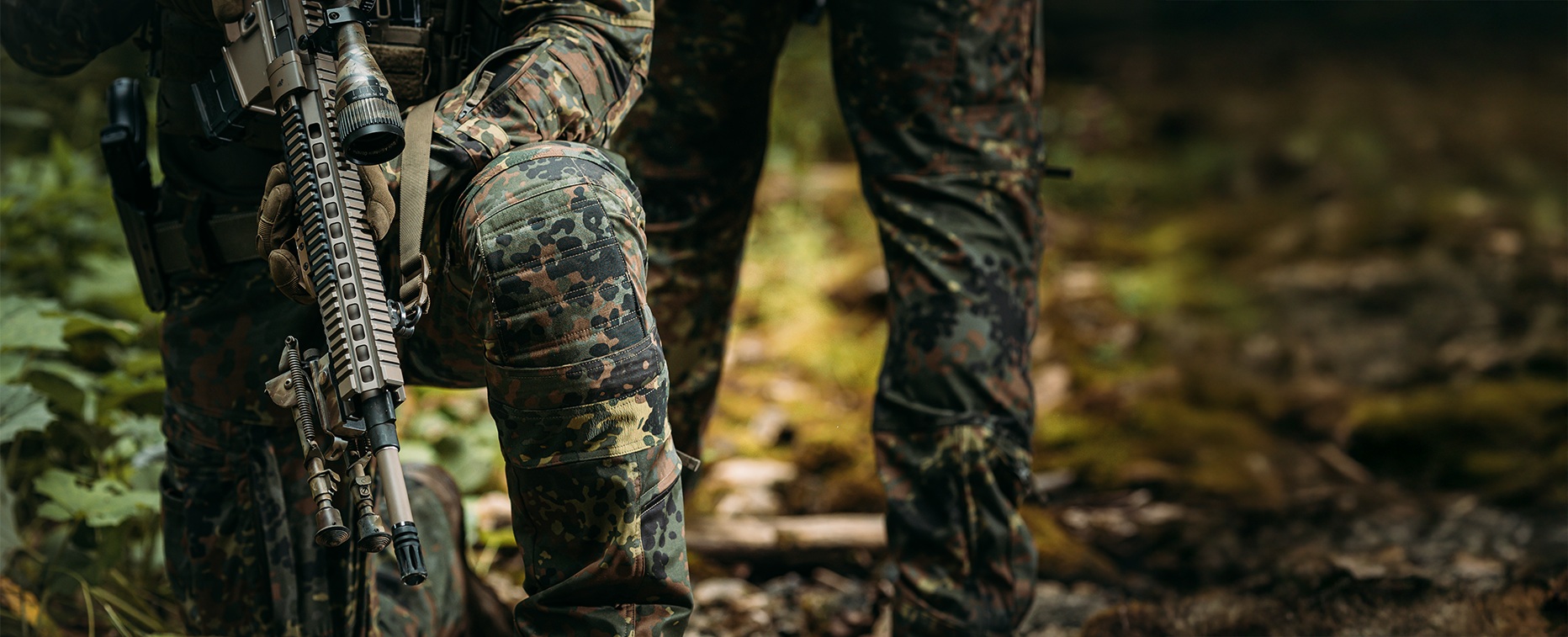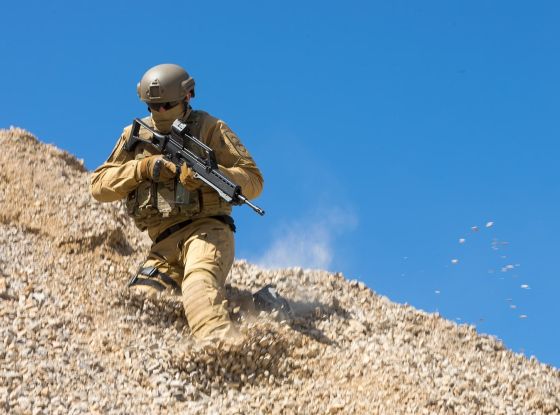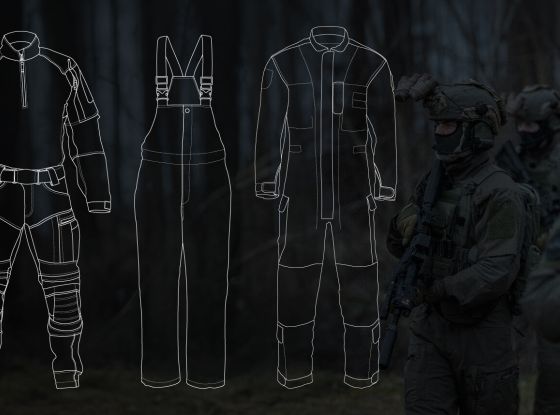Combat pants are built to take abuse—but they’re not invincible. Whether you're patrolling rough terrain, training hard, or operating in unpredictable environments, your pants face a constant onslaught: dirt, moisture, UV radiation, abrasion, and mechanical stress. The good news? With a few smart habits, you can keep your gear in fighting shape for years. Whether you're a tactical operator, military professional, or or hard-use professional, here’s how to keep your combat pants performing like day one—mission after mission.
In this blog post:
Know Your Gear: What Combat Pants Are Made Of
Knowing the fabric composition of your pants is essential to caring for them properly. Here's how common combat pant materials behave:
| Material | Function | Watch Out For |
| Ripstop | Tear resistance | Melts easily if exposed to open flame or high dryer heat |
| Abrasion Resistant Reinforcements (e.g. Cordura®) | Abrasion zones | Frays faster if rubbed against sharp edges or washed harshly |
| Stretch panels | Mobility | Degrades with bleach, high heat, or strong detergents |
| NyCo (Nylon/Cotton) | Breathability and toughness | Shrinks under high heat and becomes brittle if over-dried |
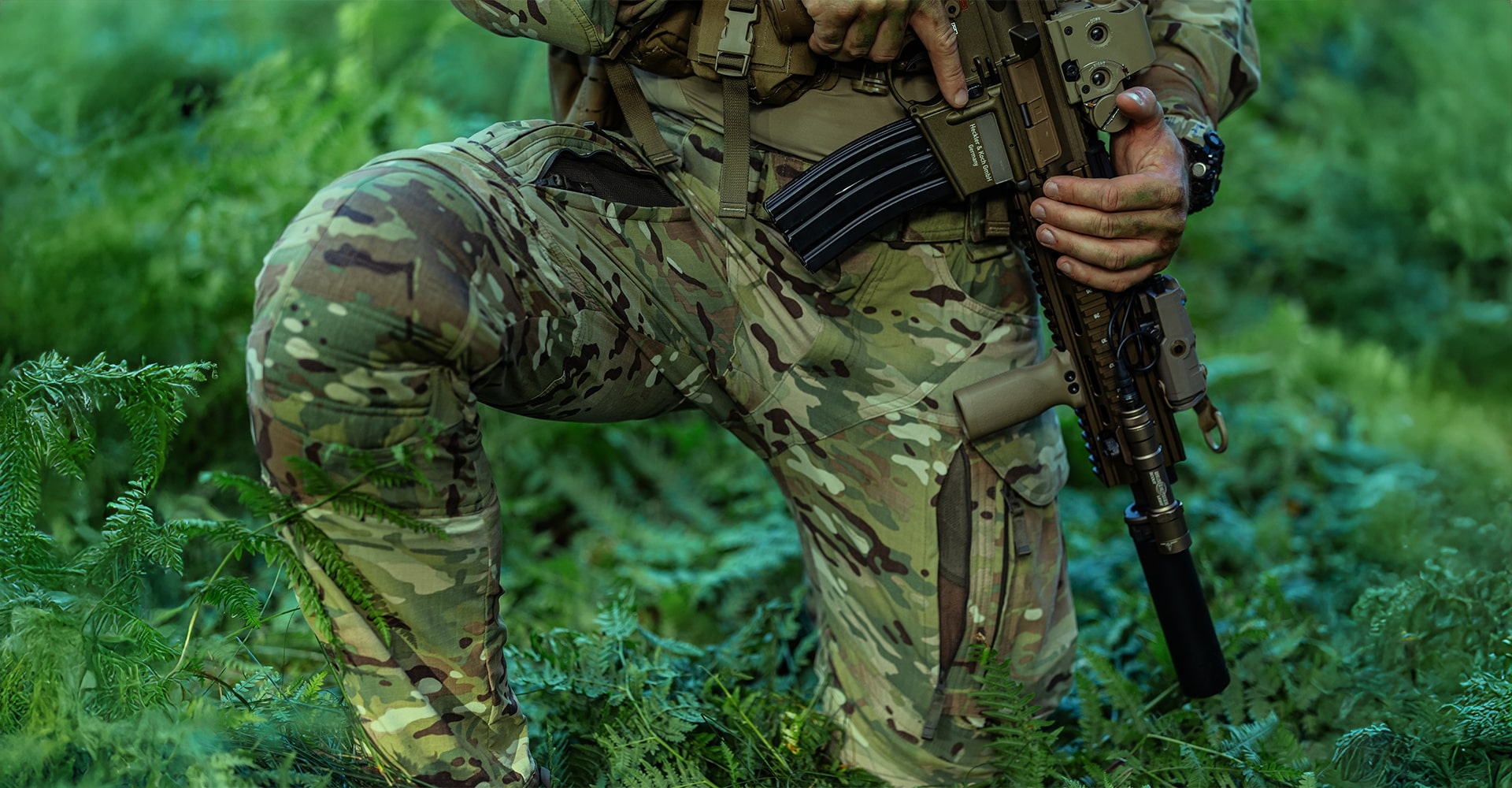
Tip: Always read the care label. It’s your first line of defense against premature wear. Ignoring it means missing essential instructions that directly impact the longevity and performance of your combat pants.
Cleaning Without Compromising: After-Use Protocol
Field conditions can leave your combat pants caked in mud, sweat, or salt. Cleaning them properly is essential for both hygiene and longevity.
Washing Do’s:
- Wash in cold or lukewarm water (max 30°C).
- Use a pH-neutral detergent (no bleach or softeners).
- Close all hook-and-loop fasteners, zippers, and buttons, and turn inside out.
- Wash pants separately from heavily soiled gear to avoid friction wear.
Washing Don’ts:
- Avoid tumble drying at high temperatures—stretch materials can warp.
- Don’t dry in direct sunlight—UV radiation weakens fibers and fades colors.
- Never dry-clean—chemicals used are too aggressive for most combat textiles.
Tip: After jungle ops, pants often trap acidic moisture and bacteria that degrade fiber over time. Rinsing in freshwater and air-drying in shade helps neutralize these effects.
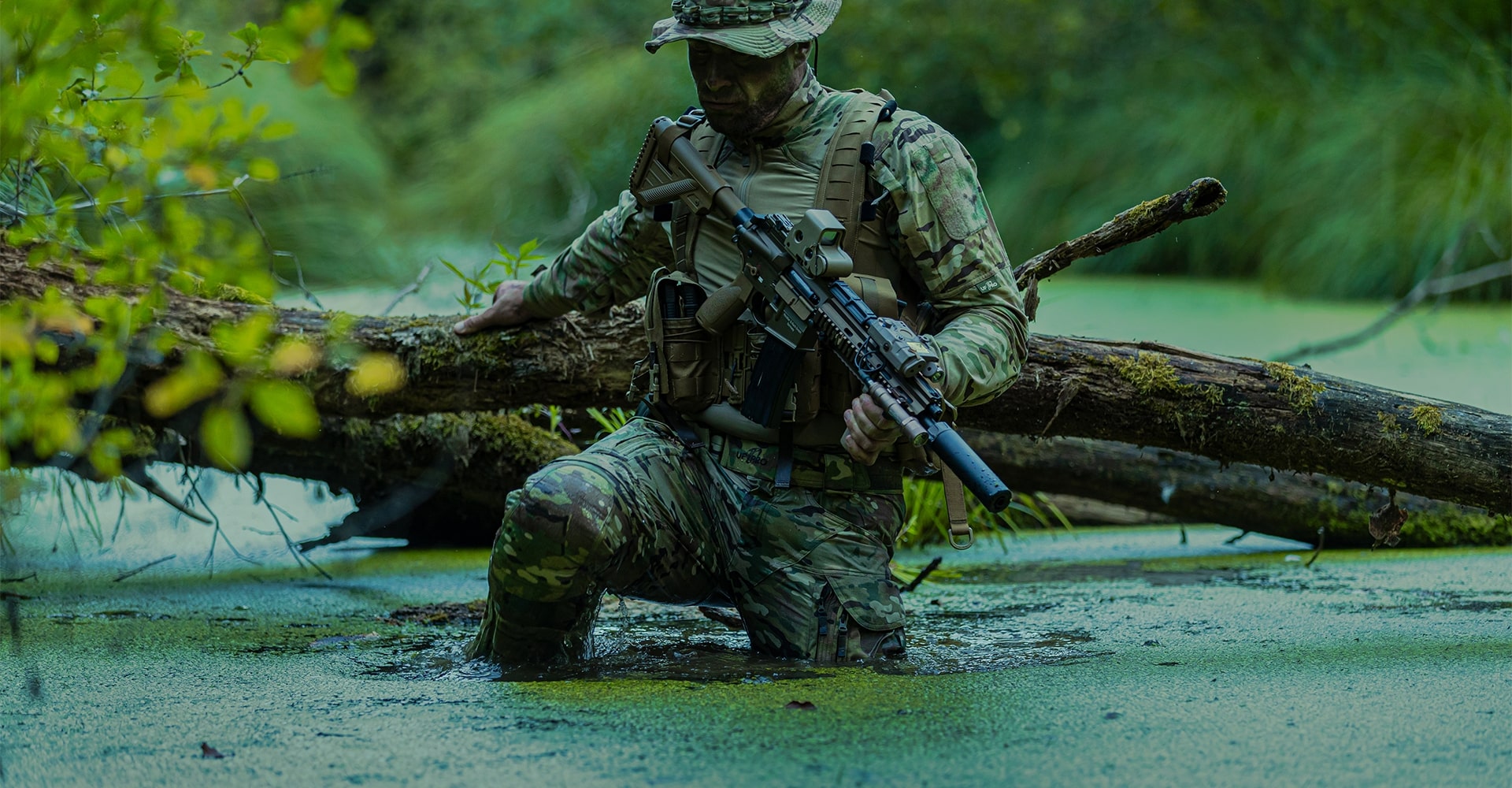
Tactical Repairs: What You Can Fix (and When to Stop Trying)
Even the best combat pants eventually take damage, especially in real-world conditions.
Common field damage that can happen:
- Small rips or punctures from thorns or gear snags
- Melted areas from accidental heat contact (e.g. mufflers, fire pits)
- Blown seams from high-movement zones like crotch or kneesHere’s what you can realistically fix in the field:
| Damage Type |
Field Repair Tip |
| Small tears | Use Tenacious Tape or ripstop fabric patches + seam grip |
| Broken seams | Stitch with waxed thread and needle (saddle stitch works best) |
| Scorched areas | Trim melted edge, patch with heat-resistant material |
Tip: Inspect knee zones, seat, and inner thigh seams regularly. These areas take the most stress from movement and impact.
Recommended kit contents:
- 1 roll of Tenacious Tape or similar adhesive patches: A strong, flexible repair tape designed for field use. It adheres to most fabrics and is perfect for sealing small tears or worn spots on your combat pants without stitching.
- 1 curved needle + heavy-duty thread: For more permanent fixes like repairing blown seams or reinforcing stress points.
- 1 small tube of seam sealer: Helps restore water resistance after patching or stitching, especially useful for water-repellent fabrics.
- 1 zip tie: A lightweight, compact tool that can double as a temporary fix for broken belt loops or fasten loose gear when stitching isn't an option.
Know when to call it:
- Multiple repaired areas reopening
- Stretch panels permanently warped or sagging
- Fabric thinning at stress points
- Lost water repellency even after re-treatment
How to Store Combat Pants Correctly
How you store your combat pants matters just as much as how you wear them. Poor storage can lead to fabric degradation, mold, and warped articulation zones.
Some of our storage tips:
- Always store dry and clean since even some small moisture pockets can cause mildew.
- Use breathable bags or mesh covers to avoid airtight plastic. Unless you’re storing only for a shorter term.
- Keep out of direct sunlight to prevent UV damage and color fading.
- Fold along natural seams, especially around articulated knees or reinforced areas, to avoid long-term fabric stress.
- Avoid keeping pants in vehicle trunks or damp basements—temperatures and moisture fluctuate too much.
- If you're rotating gear between missions, consider labeling and storing by condition (e.g. “wet use,” “dry ops,” “needs repair”) for efficiency.
Environmental Factors: How Mission Conditions Affect Longevity
Not all terrain treats your gear equally. Your operational environment can speed up, or slow down, the wear process.
What should you watch for?
| Environment |
Impact on Pants |
Action |
| Arctic / Cold | Material stiffening and micro-cracks when frozen | Thaw and air-dry slowly; never force dry over fire or heaters |
| Jungle / Wet | Mold, bacterial breakdown, pH damage | Rinse post-mission; dry inside mesh shelters or elevated platforms |
| Desert / Dry | Fine particles clog vents and abrade seams | Shake out daily; use compressed air if available |
| Urban / CQB | Abrasions from concrete, metal, or breaching tools | Reinforce knees and thighs with modular pads or sleeves |
You should adapt your post-mission cleaning and drying protocol to match the environment.
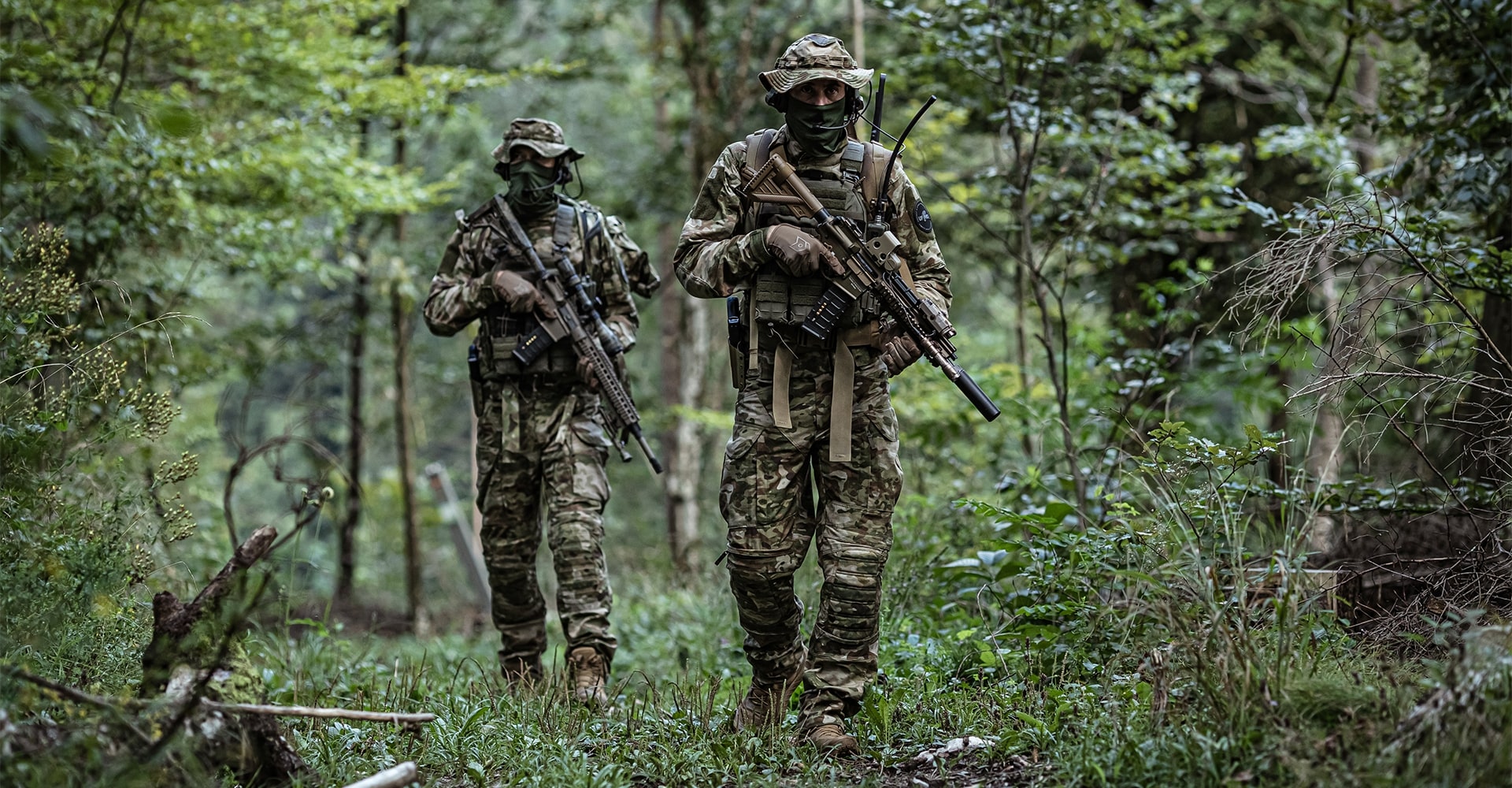
Maintain the Features That Matter
Combat pants are more than just fabric—they’re engineered systems. Key components also need care:
Knee Pad Inserts
- Always remove before washing
- Inspect for compression wear or slippage
- If hardened, replace—don’t risk knee injury or restricted movement
Ventilation Zippers
- Brush out dust and apply zipper lubricant (silicone or graphite-based)
Water-Repellent Coating (DWR)
- Reapply every 2–3 months, especially after heavy use or frequent washing, to maintain effective water resistance.
- Use a spray-on or wash-in treatment depending on what’s more practical for your setup.
- Always follow the instructions on the product and apply only to clean, dry fabric for best results.
Want to extend the life of your gear? Read our article on How to Maintain Rain Gear and DWR Treatment.
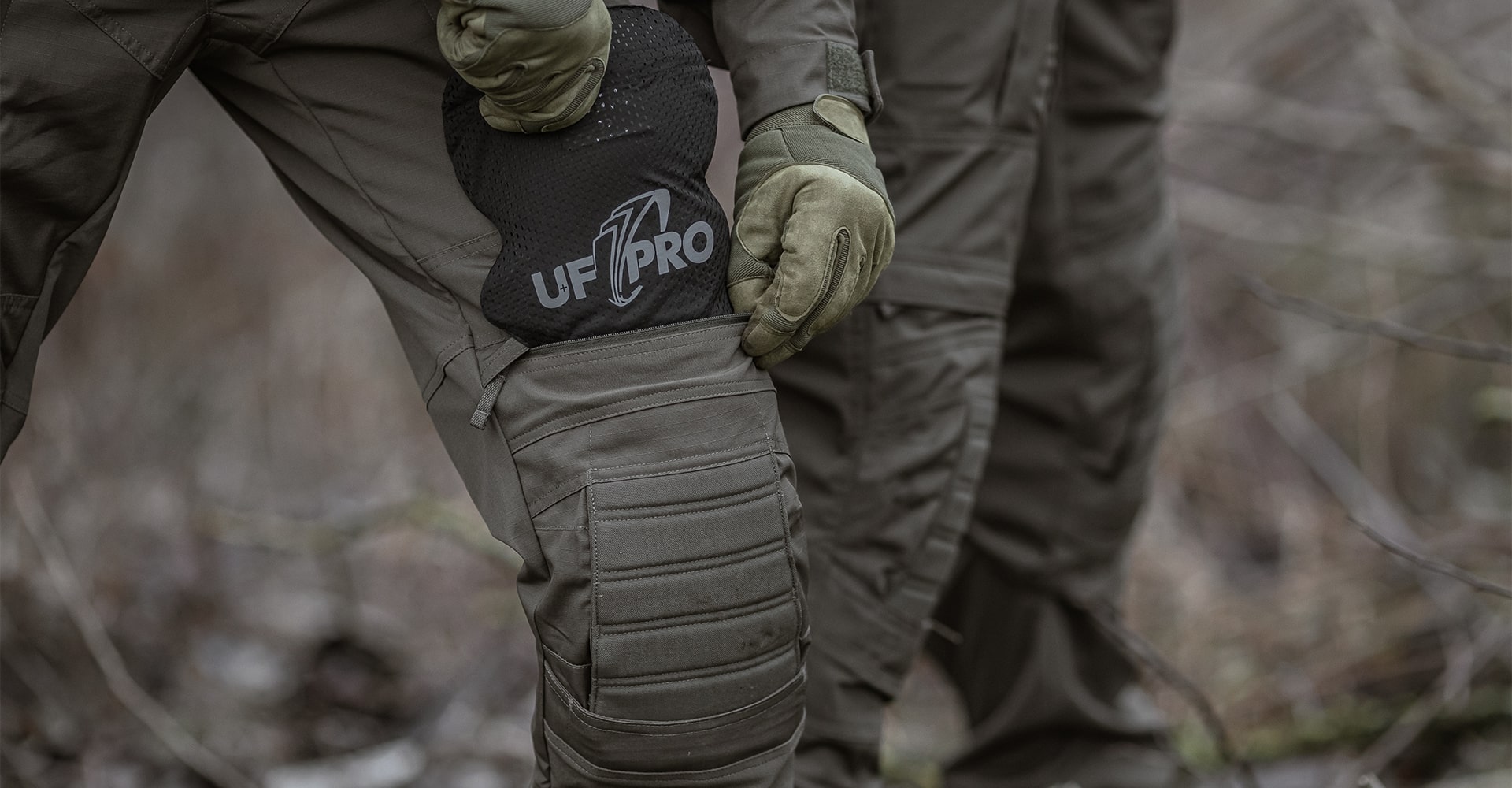
Conclusion
Combat pants are more than just gear—they’re your frontline defense, keeping you protected, agile, and ready for any mission. Just like any high-performance equipment, they need attention to deliver their best when you need them most. With the right care, repairs, and storage, you can ensure your pants stay in peak condition, enhancing their durability and maintaining their full potential. A little effort goes a long way—keeping your gear mission-ready for years to come.

